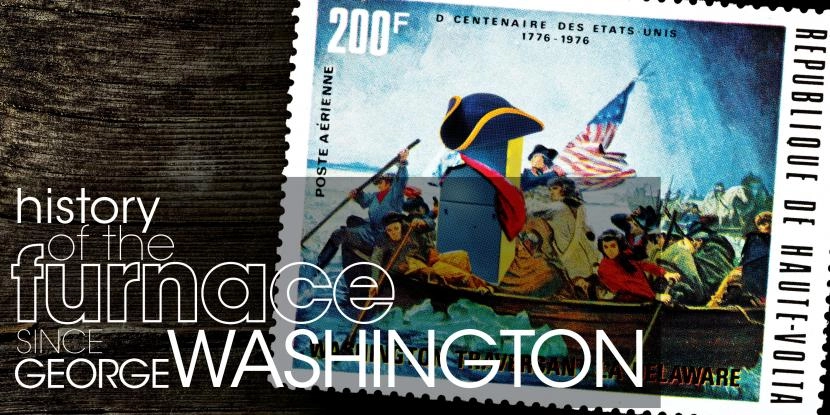History of the Furnace since George Washington

On this 283rd anniversary of George Washington's birthday, it’s amazing to see the progress America has made both culturally and technologically over the years since this country was founded. Among our many life-changing technological achievements is the evolution of home heating technology.
Staying Warm before Electricity
Creating warmth for survival and relief from winter’s chilly temperatures has long since been an issue across the U.S., with many Americans relying on heat from a wood-burning fireplace for warmth in early times. Travel a few feet from the fireplace, however, and our ancestors found themselves back in the deep freeze. Enter the cast iron radiator…
Cuddling up to Convection
In 1885, Dave Lennox helped advance home heating with the help of low cost coal burning cast iron radiators. With the help of natural convection, the radiators used heat’s rising nature for more efficient heat distribution. Often kept in basements, the radiators allowed homeowners a better shot at warming more rooms throughout the home above.
Building on Bunsen
Still struggling to stay warm despite cast iron’s convection, Americans continued to seek better ways to stay warm. Then came German Robert Bunsen and his laboratory Bunsen burner technology. The first open flame to produce heat without soot, it blended gas with air in a controlled manner before combustion, fueling the development of gas, propane, and oil fired heating systems. Pilot lights on gas-powered heaters are a prime example of this technology and are still in-use today.
Exciting Electricity
Thanks to Thomas Edison’s electrical contributions beginning in 1882, electric heat entered the picture. In 1905 Albert Marsh discovered the metal chromel, allowing him to construct a heating element 300 times stronger than others on the market. Dubbed the father of the electrical heating industry, his heaters pushed electrical current through this metal heating element, which converted electricity to distributable heat. To this day electrical heating technology has changed very little and is still produced the same way.
Wondrous Wall Furnaces
In 1919, Alice Parker invented and patented the first American central heating system. Providing better temperature regulation and more substantial heat throughout homes, the systems finally put an end to families huddling around the fireplace to stay warm. Her invention gave way to the first coal fueled, electric fan and ductwork distributed forced air wall furnace around 1935.
Terrific Technology
Today’s furnaces have progressed even further from their 1930s predecessors, offering an array of fuel and warmth sources from oil to natural gas, electricity and even heat pump and geothermal technologies. In addition, today’s thermostats allow for the fine-tuning of temperatures and even more ease-of-use and convenience thanks to Wi-Fi programmable thermostat technology and apps.
Better Left in the Past
Are you using an outdated old relic of a furnace that has you lugging in fireplace logs like your ancestors from the days of yore? The EPA’s Energy Star program strongly recommends replacing furnaces 15 years old and older due to the dramatically improved efficiency of newer models. Furnace efficiency has improved drastically over the years, from 65 percent efficiency in older, 1970s furnace models to 97 percent – near total efficiency – in today’s most efficient furnace options. That tremendous efficiency increase can save you a great deal on heating costs monthly. Some things are better left in the past – is your furnace one of them?
Is your furnace coming up on its bicentennial? If you’re tired of living in the past and need furnace maintenance, contact Aire Serv® today.
 Click to call
Click to call


